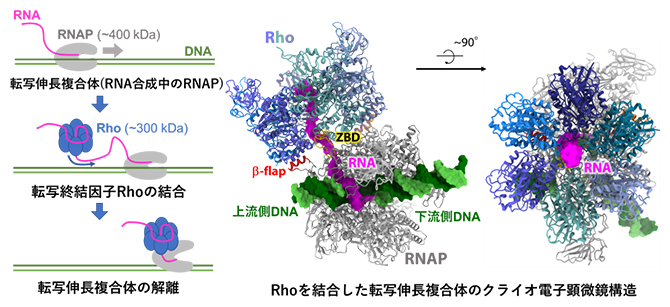カリフォルニア大学サンディエゴ校の研究者が、自閉症スペクトラムのサブタイプを持つ幼児を正確に識別する新しいアイトラッキングテストを開発 UC San Diego scientists develop new eye-tracking test that accurately identifies toddlers with a subtype of autism spectrum disorder
2023-02-08 カリフォルニア大学サンディエゴ校(UCSD)
◆2023年2月8日にJAMA Network Openに掲載された研究では、カリフォルニア大学サンディエゴ校医学部の研究者が、幼児の母親のスピーチへの注目度を定量化する新しいアイトラッキングテストを開発しました。この測定法を用いて、研究者らはASDの幼児のサブセットを確実に特定することができ、その幼児の母親のスピーチに対する注意の低さは、社会性や言語能力の弱さとも関連していた。
◆母親のスピーチの発話は、子どもの注意力と学習力を刺激し、言語能力や感情反応性の発達を助けることが研究で明らかにされている。ASDの幼児がこの発話スタイルにそれほど注意を払わない場合、後年の社会的スキルに影響を与えるかもしれない。このように、アイトラッキング検査は、ASDの早期スクリーニング、診断、予後に有益であり、臨床医がどの治療がその子に最も有効であるかを特定するのに役立つ可能性がある。
◆この研究は、1歳から2歳の、ASDの診断がある幼児とない幼児653人を調査しています。実験では、各児童はスクリーン上で2つのビデオを見せられた。1つは「母親のスピーチ」で話す女性、もう1つは人間以外の場面(交通量の多い高速道路か、電子音楽を伴った抽象的な形や数の動画)である。ビデオは1分間利用可能であり、幼児は与えられた時間にどちらのビデオを再生するかを目でコントロールした。
◆ASDでない幼児は一貫して「母親のスピーチ」に高い関心を示し、実験の約80%をそのビデオに費やした。しかし、ASDと診断された幼児では結果は一様ではなく、固視レベルは実験時間の0~100パーセントの全範囲に及んだ。「母親のスピーチ」に固執した時間が30パーセント未満の幼児のサブセットは、この測定だけでASDであると正確に特定することができた。これらの子どもたちは、その後の言語や社会的スキルのテストでも低いスコアを示した。ASDであっても、大多数の時間を「母親のスピーチ」に注目していた幼児は、より高い社会性と言語能力を示し、ASD集団の中の多様性が浮き彫りにされた。
◆「母親のスピーチ」への関心が低いことが、これらの子どもの社交性低下の原因なのか、それとも単にその症状なのかはまだわかっていないが、いずれにせよ、「母親のスピーチ」はASDのサブタイプの高精度バイオマーカーであるようだ、と著者らは述べている。
<関連情報>
- https://today.ucsd.edu/story/toddlers-attention-to-motherese-speech-may-be-used-to-diagnose-autism
- https://jamanetwork.com/journals/jamanetworkopen/fullarticle/2801102
自閉症スペクトラムの初期マーカーとしての母国語音声への注意の度合い Level of Attention to Motherese Speech as an Early Marker of Autism Spectrum Disorder
Karen Pierce, Teresa H. Wen, Javad Zahiri, Charlene Andreason, Eric Courchesne, Cynthia C. Barnes, Linda Lopez, Steven J. Arias, Ahtziry Esquivel, Amanda Cheng
JAMA Network Open Published:February 8, 2023
DOI:doi:10.1001/jamanetworkopen.2022.55125
Key Points
Question Can levels of attention toward motherese speech, indexed through eye tracking, be used as a diagnostic marker of autism spectrum disorder (ASD), and are they associated with social and language abilities?
Findings In this diagnostic study of 653 toddlers aged 12 to 48 months, levels of fixation on motherese speech were high in toddlers without ASD but significantly reduced in toddlers with ASD. If a toddler fixated on motherese speech at or below 30%, the probability of that toddler being accurately identified as ASD was 94% and also signified an association with reduced social and language abilities.
Meaning The findings suggest that levels of attention to motherese speech may be a diagnostic and prognostic marker of ASD.
Abstract
Importance Caregivers have long captured the attention of their infants by speaking in motherese, a playful speech style characterized by heightened affect. Reduced attention to motherese in toddlers with autism spectrum disorder (ASD) may be a contributor to downstream language and social challenges and could be diagnostically revealing.
Objective To investigate whether attention toward motherese speech can be used as a diagnostic classifier of ASD and is associated with language and social ability.
Design, Setting, and Participants This diagnostic study included toddlers aged 12 to 48 months, spanning ASD and non-ASD diagnostic groups, at a research center. Data were collected from February 2018 to April 2021 and analyzed from April 2021 to March 2022.
Exposures Gaze-contingent eye-tracking test.
Main Outcomes and Measures Using gaze-contingent eye tracking wherein the location of a toddler’s fixation triggered a specific movie file, toddlers participated in 1 or more 1-minute eye-tracking tests designed to quantify attention to motherese speech, including motherese vs traffic (ie, noisy vehicles on a highway) and motherese vs techno (ie, abstract shapes with music). Toddlers were also diagnostically and psychometrically evaluated by psychologists. Levels of fixation within motherese and nonmotherese movies and mean number of saccades per second were calculated. Receiver operating characteristic (ROC) curves were used to evaluate optimal fixation cutoff values and associated sensitivity, specificity, positive predictive value (PPV), and negative predictive value. Within the ASD group, toddlers were stratified based on low, middle, or high levels of interest in motherese speech, and associations with social and language abilities were examined.
Results A total of 653 toddlers were included (mean [SD] age, 26.45 [8.37] months; 480 males [73.51%]). Unlike toddlers without ASD, who almost uniformly attended to motherese speech with a median level of 82.25% and 80.75% across the 2 tests, among toddlers with ASD, there was a wide range, spanning 0% to 100%. Both the traffic and techno paradigms were effective diagnostic classifiers, with large between-group effect sizes (eg, ASD vs typical development: Cohen d, 1.0 in the techno paradigm). Across both paradigms, a cutoff value of 30% or less fixation on motherese resulted in an area under the ROC curve (AUC) of 0.733 (95% CI, 0.693-0.773) and 0.761 (95% CI, 0.717-0.804), respectively; specificity of 98% (95% CI, 95%-99%) and 96% (95% CI, 92%-98%), respectively; and PPV of 94% (95% CI, 86%-98%). Reflective of heterogeneity and expected subtypes in ASD, sensitivity was lower at 18% (95% CI, 14%-22%) and 29% (95% CI, 24%-34%), respectively. Combining metrics increased the AUC to 0.841 (95% CI, 0.805-0.877). Toddlers with ASD who showed the lowest levels of attention to motherese speech had weaker social and language abilities.
Conclusions and Relevance In this diagnostic study, a subset of toddlers showed low levels of attention toward motherese speech. When a cutoff level of 30% or less fixation on motherese speech was used, toddlers in this range were diagnostically classified as having ASD with high accuracy. Insight into which toddlers show unusually low levels of attention to motherese may be beneficial not only for early ASD diagnosis and prognosis but also as a possible therapeutic target.



